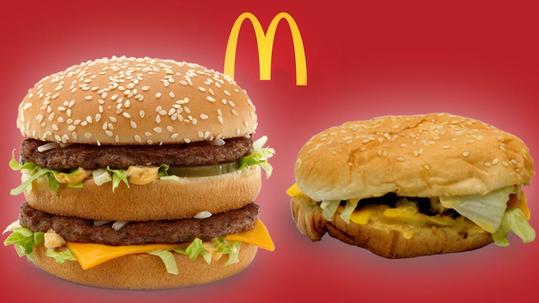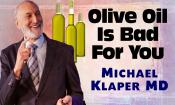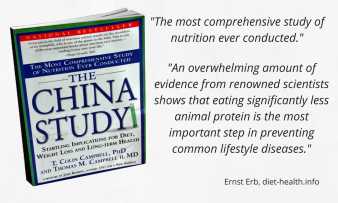10 Lies That Advertising Sold You
The video is unfortunately no longer available. Please read the text below, which describes the content of the video well.
The video is unfortunately no longer available. Please read the text below, which describes the content of the video well.
What do diamonds, natural flavors, Listerine, Mascara, fast foods, vitamin supplements, serving suggestions, bottled water, Nutella, and the American Pledge of Allegiance all have in common? — Photoshop, misleading labels, and punchy slogans to manipulate consumer perceptions.
10. The association between diamonds and marriage was first put in place by the advertising company N.W. Ayer. The agency was hired to boost the sales of a jewelry company (De Beers) that had taken a considerable hit following the Great Depression of 1930. With the commercial message “diamonds are forever,” and the linking of gems with marriage, the company suddenly extended its target clientele from nobility to people from all social classes who were looking to hallmark one of the most important events in their life.
9. “Natural flavors” is one of the most-used buzz words in the advertising industry that is employed to suggest quality and favorable benefits. According to the Environmental Working Group in America, this is the fourth most commonly listed ingredient in over 80'000 foods studied. In reality, these are only enhanced chemicals found in fruits or other ingredients that are added to the product being advertised.
8. Despite not being a medical condition but a symptom of problems such as diabetes or gum diseases, the term halitosis was used in 1920 by Jordan Wheat (owner of Listerine) to boost the sales of mouthwash. Using a Latin word and suggesting the possibility of a medical issue, Wheat managed to increase Listerine’s revenues from $115'000 to $8 million.
7. After using digitally enhanced photographs in their advertisements for cosmetic products and unrealistically depicting the expected results, in 2011 L’Oreal was forced to pull an ad for Teint Miracle foundation. The same happened to Rimmel, after being accused of having used artificial lashes to advertise their 1-2-3 Looks Mascara.
6. An entire industry has developed around food styling and food photography. Preparing food for the camera and making it look appetizing and mouthwatering has nothing to do with the actual product (an entire team worked for 6 hours to create the burger for the McDonalds posters).
5. The vitamin and supplement industry is one of the most flourishing industries in America. Even though vitamin C is promoted as a means to prevent the common cold and vitamin E to reduce the risk of heart disease, these claims are not fully backed by scientific research. This and the unexpected and dangerous side effects of such a supplement were the reason why the company Airborne was sued in 2008.
4. To trick consumers into believing that a product is healthy, the suggested servings listed on the packaging are calculated only for a small amount of the product (e.g., 500 ml CocaCola bottles are advertised as “1 serving = 100 calories” with one serving being 250 ml). Even if the suggested serving is required on the label, this information is usually hidden in places on the package that are hard to find or where the print is hard to read.
3. Despite being advertised as “cleaner,” bottled water is no healthier than tap water. In countries like America, 92 % of local water systems meet hygiene standards so that bottled water is not a necessity, but rather a way for the industry to increase its profits. Moreover, bottled water can contain dangerous substances, as was the case with the Dasani water produced by CocaCola that contained hazardous levels of the carcinogen bromate.
2. Nutella and Kellogg’s have been promoted by their producers as healthy products that provide a considerable amount of vitamins (Nutella) or strengthen children’s immune systems (Kellogg’s). However, given the lack of scientific findings to back these claims, both companies were sued.
1. The Pledge of Allegiance (an expression of loyalty to the US flag and the Republic of the United States) was allegedly created as a marketing gimmick in an attempt to boost the sales of flags in US. However, in 42 American states, it became mandatory to recite the Pledge of Allegiance in schools and is still used at various public events.
Unfortunately, this is only a small part of the deception and manipulation that happens as a result of marketing slogans and advertisements. As Dr. Robert Lustig also stated, some undesirable behaviors (e.g., excessive sugar consumption and obesity) might therefore not be entirely a matter of personal responsibility, but an effect of the misinformation and lack of access to unbiased information.
More videos
To understand health and ecology, extensive basic knowledge is required. Here you will find fact-based texts and book reviews.
Due to a lack of knowledge, vegetarians, vegans, and raw foodists often eat unhealthily – for years or even decades. This basic knowledge can prevent this.
The China Study clearly lays out how the current Western diet can be improved to prevent lifestyle diseases. We say: Most important book on nutrition and health
Erb Muesli with Rolled Oats is a vegan (lactose-free), raw muesli. It serves as an especially healthy breakfast and is a good “bread replacement.”
These Cucumber Rolls with “Goat’s Cheese” and Mint Sauce hold together surprisingly well. They are ideal as an appetizer or finger food.
Sun-dried chili peppers and parsley give the savory pea pancakes a special flair. We recommend trying the pancakes with curry.











